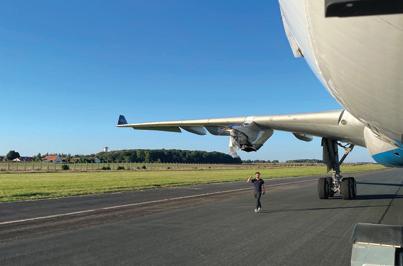
13 minute read
OVES
from S02
The opening of the St Helena Airport provided the island with a more efficient link to the rest of the world and, as a result, it is not immune to the challenges facing any airport. “We term ourselves the ‘big-small airport’, having to meet international standards and regulations while operating with very low staff numbers and weekly flights,” said Gwyneth Howell, CEO.
Alongside the weekly commercial departures and arrivals, the airport accommodates frequent private and charter flights. It is also beneficial to aircraft needing technical stops, such as those who use St Helena as a layover between South America and southern or western Africa. Most crucially, the airport supports medevac services to take seriously ill patients to the African mainland to receive treatment. Undertaking these bespoke operations requires considerable flexibility and commitment from staff working at the airport.
Advertisement
Life-saving connections
The contribution to medical services, via medevac flights, has been a great success and proved the airport’s worth over the last five years. Partly because it has also been able to link up with Ascension Island, relatively close at 800 miles away.
“In 2021 we had 22 Medevacs taking critical patients to South Africa for urgent medical treatment,” explained Mrs Howell. “In 2022, we have had 17 Medevacs, however four of these being Medevac flights for Ascension Island. The operator Awesome Air uses St Helena as a technical stop to and from Ascension.” Mrs Howell added that the contribution to medical services, via medevac flights, has been a great success for the airport over the last five years.


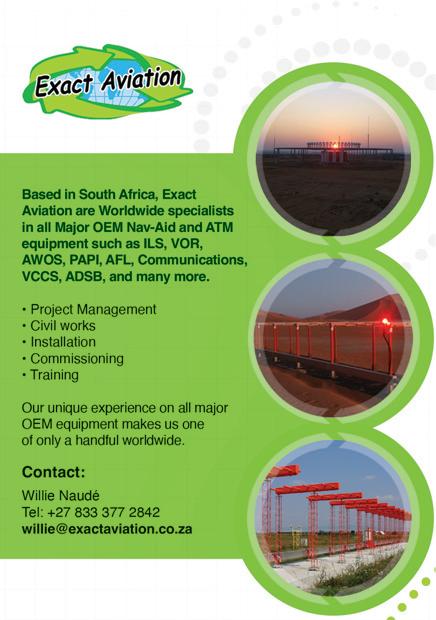
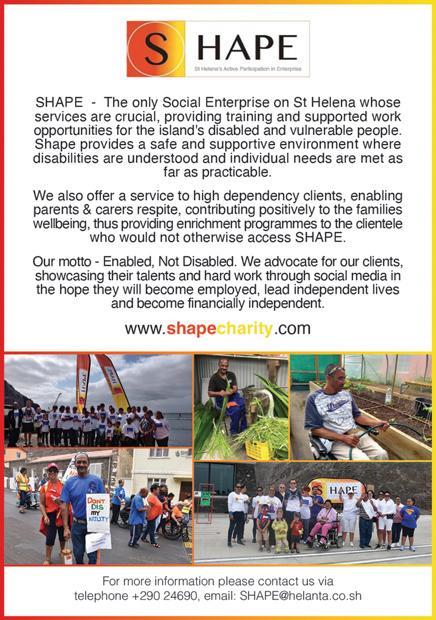
Mrs Howell also noted that the Airlink weekly flights were a ‘silent Medevac’ as it has made it possible for less critical patients who require specialised and critical treatment not available locally to get off and, on the island without any hassle. The airport is an important lifeline to the community in need of critical medical attention.
Like the rest of the world and stakeholders in the global aviation industry, the ‘big-small’ airport felt the negative impact brought on by the Covid pandemic. St Helena Airport saw a major decrease in passenger numbers and flights. Mrs Howell noted that “We saw pax numbers decreasing dramatically, from 9,462 at our peek in 2019 to 3,048 by 2021”.
Due to the travel restriction put in place by local authorities and the South African authorities at the height the Covid pandemic, “Airlink fights to the island were suspended on the 22 March 2020,” recalled Mrs Howell. “The St Helena Government then put in place charter flights which were operated by Titan Airways. These flights then ensured that we continued to provide our service as the gateway to the island throughout the whole period.”
The island travel restrictions were completely eased back on the 8th of August and that same month Airlink scaled back flights. “The easing of restrictions and the resumption of Airlink flights have brought about a great sense of optimism for us as an airport, we have recorded passenger number of 5,924 to date and this is passengers before 2022 was out.”
Sustainable skies
The ‘big-small’ airport is fiercely proud of its commitment to the environment, for example, the airport has a Carbon Management policy. “The main aim of that policy,” said Mrs Howell, “is to assess, reduce and mitigate greenhouse gas emissions under its direct control. All the while guiding aviation stakeholders and users of the airport to assess, reduce and mitigate their emis - sions, with the ultimate aim of achieving carbon neutrality.”
Mrs Howell went on to explain that this commitment supports UN-defined Sustainable Development Goals and is another way St Helena is connected to the rest of the world. St Helena must keep its carbon footprint in mind. And it does, with a host of sustainable initiatives.
“We achieved the ACI Airport Carbon Accreditation Level 1 on the 3rd of December 2020,” said Mrs Howell. “ACI conduct a desk top remote APEX (Airport Excellence Programme) Safety Audit. The APEX Programmes combines the mandate for regulatory compliance with day-to-day operational needs to maximise operational efficiency and safety standards.”
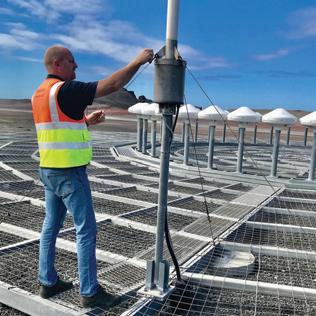
St Helena altogether greener
The airport has also committed to supporting the vision of the wider St Helena Island 10-year plan under the ‘Altogether Greener’ heading. The goal is to safeguard the environment for future generations by minimising pollution and the use of resources.
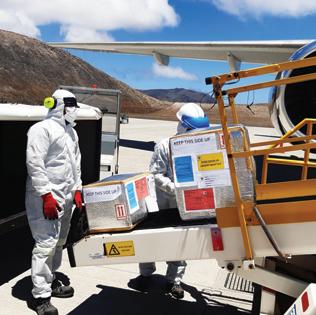
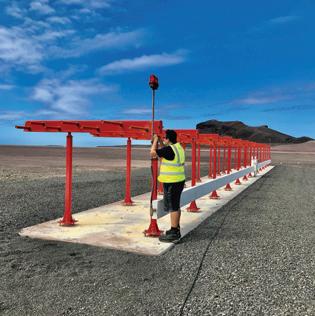
‘Altogether Greener’ objectives:
• Minimise the impact of airport activities on biological diversity in the airport area.
• Minimise the risk of introducing nonnative species of plants and animals to the island.
• Minimise the use of resources without affecting aircraft and passenger safety.
• Adopt the waste mitigation hierarchy of Reduce – Re-use – Recycle – Recover.
Mrs Howell was enthusiastic about what can be accomplished through adopting these objectives. “We will minimise noise, vibrations and the visual impact on local communities,” she said. “Maximise the social and economic benefits of the air - port through preferential employment of St Helena citizens and outsourcing to local suppliers. Ensuring the requirements of the Environmental Management System are extended to all suppliers.”
As Mrs Howell acknowledged, the airport has a strong relationship with its partners, and a close network of local suppliers across the island. “We have worked very hard to maintain the same suppliers for most of our goods and services,” she said. “Additionally, we use a select bunch of freight forwarders for goods coming from the UK and South Africa.
“Environmental and economical awareness and the inward freight schedule are important. The inward flight has limited freight capacity, especially when it comes in with a full load of pax. So, you will note in peak season the freight loads are low, in low season the freights loads are high. However, we also rely on the cargo vessel to transports goods to the island for the airport.”
Clear skies, bright future
Unsurprisingly, the ‘big-small’ airport’s vision for the growth and development over the next few years is large in scope but realistic in content.
“I want us to keep the airport open and operational, grow the commercial flights and look for other partners,” said Mrs Howell. “We plan to develop a customer engagement strategy post Covid-19 with other players on the island. We would like to see an increase in Airlink flights during the diving and whale shark season of 2023-2024.”
Mrs Howell sees collaboration as the essential element of the success stoking the fires of this distinctive and intriguing ‘big-small’ airport. “My entire career, I have believed hard work and dedication is key to all working towards a common goal,” she reflected. “Every day at work is an opportunity to contribute to the growth of the company. It brings satisfaction knowing that I have done my best to improve something or create something great.”
The Port of Milford Haven is a leading UK port handling over 30 million tonnes of cargo annually. That’s not all though; the bustling site in Pembrokeshire, South Wales provides expert solutions in marine renewables, freight and passenger ferry services, fisheries, leisure and retail. Commercial Director Steve Edwards and Tam Bardell, Energy Development Manager, described some of the most exciting enterprises the company is involved in. Report by Hannah Barnett.
Though the Port of Milford Haven was officially founded 65 years ago in 1958, the history of commerce and shipping in the Milford Haven waterway stretches back centuries. These days much of the focus at the port is dedicated to how it can contribute to a greener future. There are multiple sustainability initiatives on the go, set to benefit not only the port, but the wider Welsh community too.
Leading by example, the Milford Haven Waterway Future Energy Cluster wants to strengthen the UK’s energy independence. This is a local coalition of energy companies, renewable developers, green technology innovators, the council and the Port of Milford Haven. The initiative has set a lowcarbon vision for the area by backing a South Wales Celtic Freeport bid and a South Wales Floating Offshore Wind proposition. One of the aims of the cluster is to help increase the region’s renewable energy capacity by 10 GW by 2030.
Steve Edwards, Commercial Director for the Port of Milford Haven, explained the main objective of the cluster: “I thought it was important that we galvanised a collaborative energy vision for the Haven. There is vast potential for marine renewables to decarbonise not only the industrial sector across South Wales, but also the UK more generally. The launch of the cluster is a pivotal moment for us.”
Mr Edwards said he hopes the project will help the decarbonisation process of the region’s largest emitters through the South Wales Industrial Cluster. “You’ve got Tata Steel, Valero, RWE, all in South Wales. The port has been part of that industrial group from its early stages as well.”
Largest energy port
As Mr Edwards acknowledged, the Port of Milford Haven is known as the UK's largest energy port. This is partly because the port has certain strategic advantages such as the ability to handle vessels with draughts of up to 22 metres. It also has valuable proximity to Atlantic trade routes.
The port has transported LNG since 2009. Mr Edwards identified this as a ’significant milestone’ because the Port of Milford Haven now carries, on average, 20% of the UK’s LNG, serving the South Hook LNG and Dragon LNG companies.
To give a sense of the scale of activity, Mr Edwards added: “In 2020, Milford Haven transported around 65% of all the freight passing through Welsh ports – 33.5 million tonnes. That’s dominated by LNG and oil cargoes. And in 2019, pre-Covid, our twicedaily ferry service saw 327,000 passengers travel between Ireland and Milford Haven. We've already supported over 1,000 vessels into the Haven over the last nine months. I think these are extraordinary stats.”
Energy Kingdom Project
It is no surprise that as the UK’s largest energy port, the company was a significant player in the Milford Haven: Energy Kingdom Project, a £4.5 million initiative completed in 2022.
The project explored what a decarbonised local energy system could look like for the Milford Haven area and the potential of producing zero-carbon hydrogen alongside other renewables. Central to the project is a commitment to engage with the community and local industry, providing insight and opportunities for economic growth.
Tam Bardell is Energy Development Manager and played a key role in the project. He explained how it came about: “We are the UK's largest energy port and we have some very significant energy infrastruc ture here. We need to think about how it’s all going to be used to decarbonise and transition to a net-zero future in all energy vectors – heat, power and transport.
“The technology is already there to decarbonise; it's more about creating market levers, investment and infrastructure to do so. That's what this project sets out to do: to explore how you create that seed demand for renewables and hydrogen, and how that will aid a larger scale transition to net-zero within the region. It's clearly established the vision to redefine the Port of Milford Haven as a hydrogen hub. It’s also identified local investment propositions to catalyse the market.
“As part of the project, we demonstrated the world's first smart hydrogen hybrid heating system. That's an air-source heat pump paired with a boiler and smart controls which can react to local conditions. We put a hydrogen boiler in and tested hydrogen combustion through the heating system. We believe we are the first in the world to do that with a hybrid system. We also put in a hydrogen-electrolyser and refueler right down in the front of Milford Waterfront, where we get a lot of footfall including school visits. So, it’s really in the public's eye there.”
Renewable marine energy
The port had this world-class marine engineering recognised, along with its potential for further innovation, when it was awarded over £28 million in funding from the Swansea Bay City Deal in June 2021.
The funding is to create a base for decarbonised energy production and marine renewables like offshore wind, wave and tidal, all as part of the Pembroke Dock Marine project. It also provided a substantial upgrade to the port infrastructure, with £13m invested directly by the Port of Milford Haven.
The deal has been ‘ground-breaking’
Mr Edwards said: “Having the LNG facility, then this funding, not only secured our role in the energy system today, but started to lay the groundwork for us becoming a major marine energy hub.”
The Swansea Bay City programme is expected to generate £73.5 million a year for the regional economy, across all its nine recipients.
Celtic Sea Opportunities
With so much sustainable activity already ongoing, a recent pledge by the Crown Estate to deliver a new leasing opportunity for floating offshore windfarms in the Celtic Sea provided an ideal opportunity for Milford Haven.
“We are the closest UK port to the Celtic Sea,” Mr Edwards said. “By 2050, we hope to have put more than 1,000 wind turbines there. There are estimates that the supply chain value of that could be upwards of £80 billion.”
Mr Bardell added: “We are looking at the supply chains capability to support new and emerging industries around the Celtic Sea. We’re involved in project mapping the skills gaps here in the local community and thinking about how we can engage local people to move into the sector.”
Paving the way for a renewable future is evidently essential at the Port of Milford Haven. The company is conscious of its place in the wider community. In recognition of that, it recently won an award for its sustainability from the British Ports Association.
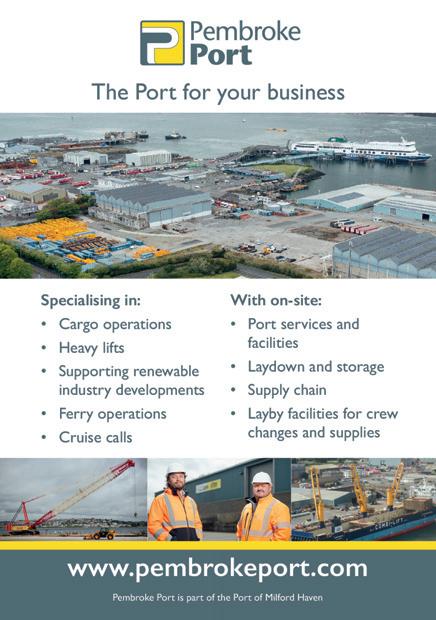
Mr Edwards reflected on the wider significance of investing so much into sustainability: “We are at the beginning of introducing a brand-new sector of energy that can help deliver Wales' ambitious net-zero plans. Under the energy cluster that we’ve now formed, I think our vision is the most exciting opportunity facing not only the port of Pembrokeshire, but also Wales.”
Dale Aviation Ltd is a privately owned company, serving aviation industry as a Maintenance Repair Organisation (MRO), offering its customers in-house support to their aircraft. The company has administrative headquarters in Haywards Heath, West Sussex and maintenance sites in France. It is UK.PART145, EASA PART145, 2-REG, BDA, Cayman, Senegal, Qatar and Madagascar approved. Managing Director Matko Dadic explained what keeps the company in the air to Hannah Barnett.
With a healthy turnover exceeding €10 million, Matko Dadic, Managing Director explained what it took to shape Dale Aviation into the successful business it is today. “Love and passion for the aviation industry keeps us going,” he said. “As well as the large range of requirements in the market for various types of support and assistance.
This could be anything, from simple ideas and guidance to full maintenance support.”
Dale Aviation offers a wide range of services to ensure that an aircraft is fit for flight. The approved scope of work covers, but is not limited to, the following: arrival and departure checks, transit checks, other routine and non-routine line maintenance tasks as part of a maintenance program, defect rectification, component replacement, minor repairs and modifications, and more. The company is highly flexible and provides services 24/7 if required.
Services on offer
The company have been running its main site at an old airport, based in central France, for 10 years. It offers a huge range of facilities.
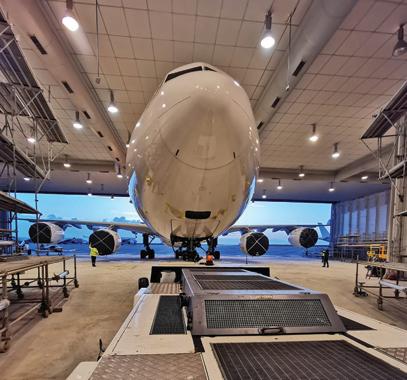
“We provide many different services from here,” explained Mr Dadic, “such as base maintenance, storage and parking, painting support, modifications, and dismantling. Other sites we have in France, and across Europe, are created to provide line maintenance service to different customers. At the moment, we have around 80 employees, and we are actively recruiting.”
It is clear that Dale Aviation is not a company prone to standing still and is always looking for opportunities for growth. For example, Mr Dadic revealed that the company works on opening line stations outside of the EU soon. As well, Mr Dadic explained that at the end of last year, Dale Aviation started its first official C-Check. A C-Check is the inspection required to be performed on each aircraft every 18 to 24 months.
Though the company has a lot going on, Mr Dadic pointed out that parking service has been the company’s busiest activity on offer, currently. “We mostly provide a parking service to a few operators for their aircraft when they are not on the ACMI contract and, at the same time, we prepare them for the next planned ACMI,” he explained. “This service has been active for the last four years.”
Also known as wet or damp leasing, ACMI leasing is an agreement between two airlines, where the lessor agrees to provide an aircraft, crew, maintenance and insurance (ACMI) to the lessee, in return for payment on the number of block hours operated.
A flying success
According to Mr Dadic, the company distinguishes itself from its competitors in the MRO marketplace simply by the high quality of its work.
“The so-called advertising model we are using is word of mouth,” he said. “Although it is an old marketing strategy, it has not lost its effectiveness. We offer to our present, or future, customers quality services and assistance. Customers are satisfied. They recommend us to their peers, who will do the same, and those peers to theirs, and so on. Yes, competition is increasing but I see this as a positive trend. We remain strong in our market.”
Indeed, no company can be successful for long without a strong relationship with its chain of partners and suppliers. Dale Aviation is no different. Among many others, the company works with Lufthansa Technik (LHT), Magnetic MRO in Estonia, Croatia Airlines Technical Services and the Italian Aermeccanica.
Mr Dadic explained that strong partnerships take time and loyalty to develop, but in the long run can pay dividends on both sides. “In the beginning, building a network of suppliers and partners was quite a hard and painful journey,” he reflected, “but the moment we increased our presence in the market and our name become known, things started to change. Now, we are the ones choosing our suppliers and partners in business. It’s fundamental to build an open and trustworthy relationship, where we can rely on each other and mutually support each other’s business, as well as profitability.”
A sustainable future
Though it is not the company’s core business, Dale Aviation sometimes has a hand in dismantling and recycling aircraft. “We are currently discussing the possibility of dismantling a couple of aircraft within the next six months,” said Mr Dadic. This, of course, improves Dale Aviation’s sustainable credentials.
Communication is important when it comes to customers, too. And, according to Mr Dadic, that it is one way Dale Aviation keeps ahead of trends in the market. “We are constantly following market requirements,” he explained. “This means complying with regulatory changes and investing in tooling and staff training. This is not a fast process as we have a limited budget for investment. But we keep up regular lines of communication with our customers and adapt ourselves to their needs. That keeps us afloat in the marketplace.

“A lot of our customers are increasing their fleet, which prompts us to seek partnerships with operators who need maintenance service providers like us. At the same time, there is a lack of base maintenance facilities and base maintenance providers. So, if we focus on keeping the quality of service at a good level, the future looks bright.”
Complementing this cloud-free horizon, Dale Aviation intends to invest in a new hangar for a wide-body aircraft, in order to fully develop its activities and services. The company remains committed to helping customers. And in Mr Dadic’s words, though challenges exist, they are what keep the job interesting: “Each day, I solve puzzles in the workplace. It keeps my mind sharp and makes me excited to get up every morning.”n one planet – one chance – one voice
